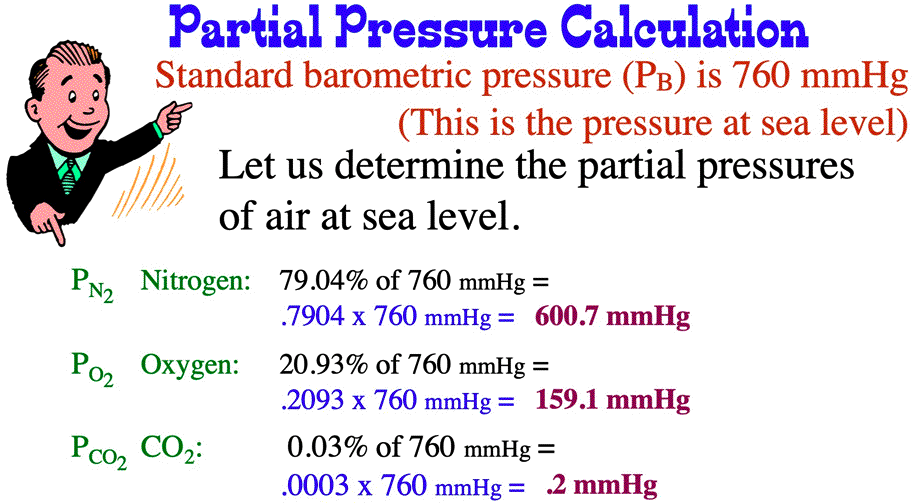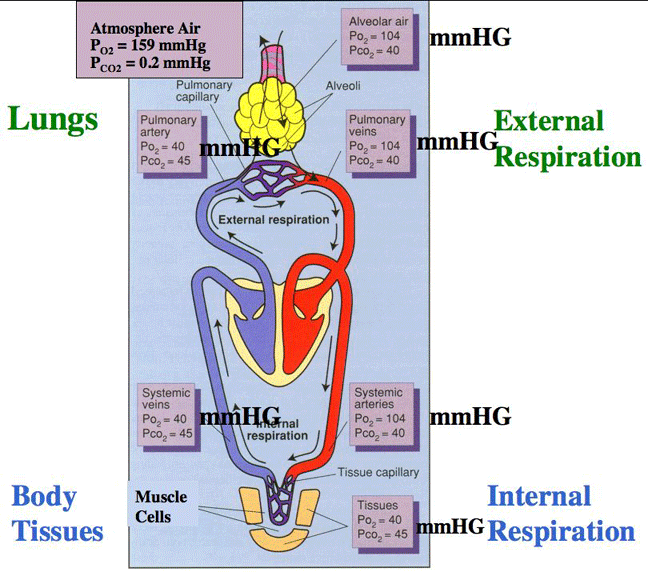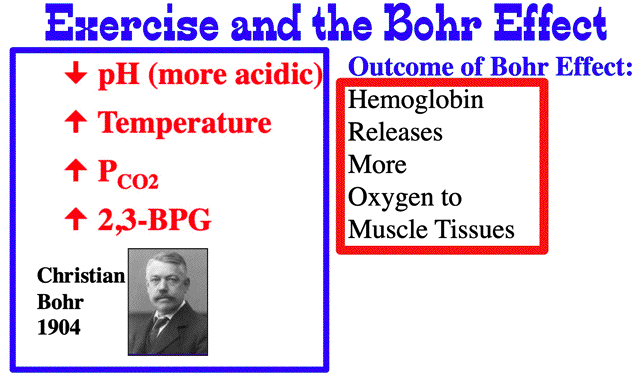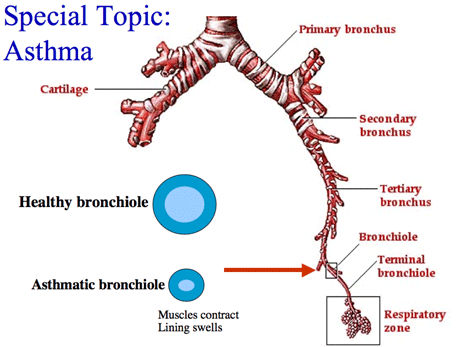| April 20 - April 24: Pulmonary Physiology OBJECTIVES: Be able to explain the difference in ventilation and respiration Be able to explain the difference in internal and external respiration Be able to explain partial pressures and equilibrium Be able to describe inspiration, expiration, the muscles involved in these processes, and the law that explains ventilation; and the relation to asthma and exercise-induced asthma Be able to discuss and calculate partial pressures of air at different barometric pressures Be able to discuss John Dalton's two laws and the Bohr effect Be able to explain the partial pressures throughout the cardiovascular system Click Here to Download Exam 4 Part A Pulmonary Physiology Terms and Anatomy Review We begin our pulmonary physiology section with some terms. What is ventilation? Ventilation is the movement of air into the lungs and out of the lungs. What is respiration? Respiration is the exchange of gases across a membrane. What is external respiration? External respiration is the exchange of gases in the lungs (alveoli capillaries). What is internal respiration? Internal respiration if the exchange of gases in the tissues (muscle cell capillaries). Class, please watch this Youtube video below. This Youtube video discusses some of the foundation terms of pulmonary physiology including, ventilation, respiration, internal respiration, and external respiration. We explore the anatomy of the respiratory system and focus on the conduction of air into respiratory zone in the lungs. https://youtu.be/KPVfzsE2QhQ Why is the cartilage around the bronchiole tubes incomplete? This allows for greater expansion of the bronchial tubes for taking in oxygen during aerobic exercise. What is the name of the alvolar cell that cleans up debris in the alveoli? Alveolar macrophage. |
||||||||
|
|
||||||||
| Understanding Pressure Gradients and Pulmonary Ventilation | ||||||||
| Class, please watch this Youtube video below. It explains pressure gradients, equilibrium and Boyle's law. We then discuss resting inspiration and expiration and the muscles (diaphragm and external intercostal) involved in breathing. See how Boyle's law is the foundational mechanism for pulmonary ventilation. https://youtu.be/rS4G3rDsk-Q From the Youtube video make sure you can define also pressure gradient, equilibrium.and Boyles law. Class, below is a summary slide of the resting ventilation. Please learn all the steps IN DETAIL in inspiration and expiration. What muscles are involved in resting ventilation? Which process is an active process and which is a passive process? |
||||||||
|
Resting Ventilation Mechanisms
|
||||||||
 |
||||||||
|
|
||||||||
| Partial Pressures and Partial Pressure Calculations | ||||||||
| This Youtube video in pulmonary physiology introduces partial pressure of gases in air and partial pressure calculations. Have your calculators ready to do partial pressure calculations. Please begin this section by watching the video. |
||||||||
| https://youtu.be/7wDofHhy-Kk There are two laws of pulmonary physiology that are specific to partial pressures. They were presented by John Dalton. What are the two laws? 1) A partial pressure is proportional to its concentration 2) The sum of the partial pressures equals the total pressure. What are the concentrations of nitrogen, oxygen and carbon dioxide in air? The concentration of Nitrogen is: 79.04 percent The concentration of Oxygen is: 20.9 percent The concentration of Carbon Dioxide is: .03 percent Class, below is a summary slide how to do partial pressure calculations. |
||||||||
 |
||||||||
| Internal and External Respiration, Partial Pressures of Oxygen and Carbon Dioxide Through the Body and the Bohr Effect |
||||||||
| This Youtube video in pulmonary physiology introduces pressure gradient calculations. A pressure gradient is the difference of two pressures across a membrane. We explore in detail internal and external respiration. Additionally, we describe the partial pressure changes of oxygen and carbon dioxide throughout the body. Lastly, there is a discussion of the Bohr Effect in pulmonary physiology, and this effect positive influences aerobic exericse by releasing more oxygen to the muscle cells. Please begin this section by watching the video. |
||||||||
| https://youtu.be/1gqQKHseSCI A pressure gradient is the difference of two pressures across a membrane. Through the body the exchange of gases occurs due to pressure gradients. Our body always goes from a higher pressure to a lower pressure until equilibrium is attained. Equilibrium means same pressure. Below are the partial pressure changes of oxygen and carbon dioxide as blood is transported from internal respiration to external respiration. The cardiovascular system is a cardiovascular 'highway' transporting oxygen and carbon dioxide. Please review the partial pressure changes diagram below, that were discussed in the Youtube video. |
||||||||
| Partial Pressure Changes of Oxygen and Carbon Dioxide Through Internal and External Respiration | ||||||||
 |
||||||||
 |
||||||||
| The Final Section of our Pulmonary Physiology Unit Covers Asthma and Exercise-Induced Asthma | ||||||||
 |
||||||||
| What is asthma? Asthma is a respiratory problem where air flow becomes inhibited (or restricted) at the level of the bronchioles in the bronchiole tree. Certain triggers (see below) cause the bronchiole muscles to contract and the lining to swell (inflammation), resulting in a restricted air passageway. Triggers of asthma include house dust, animal allergens (fur), tobacco, pollen, smoke, furnace air, colds and viral infections. Exercise-Induced Asthma or EIA With exercise-induced asthma (EIA) there is NO inflammation (with this respiratory problem). With EIA there is just muscle contraction that restricts the air passageway in the bronchioles. When does exercise-induced asthma usually PEAK? |
||||||||
| This Concludes our Pulmonary Physiology Unit! |
||||||||
| Exam 4 Part A: Click here to get questions: Exam 4 Part A is due by midnight on April 24. No late papers accepted. |
||||||||
|